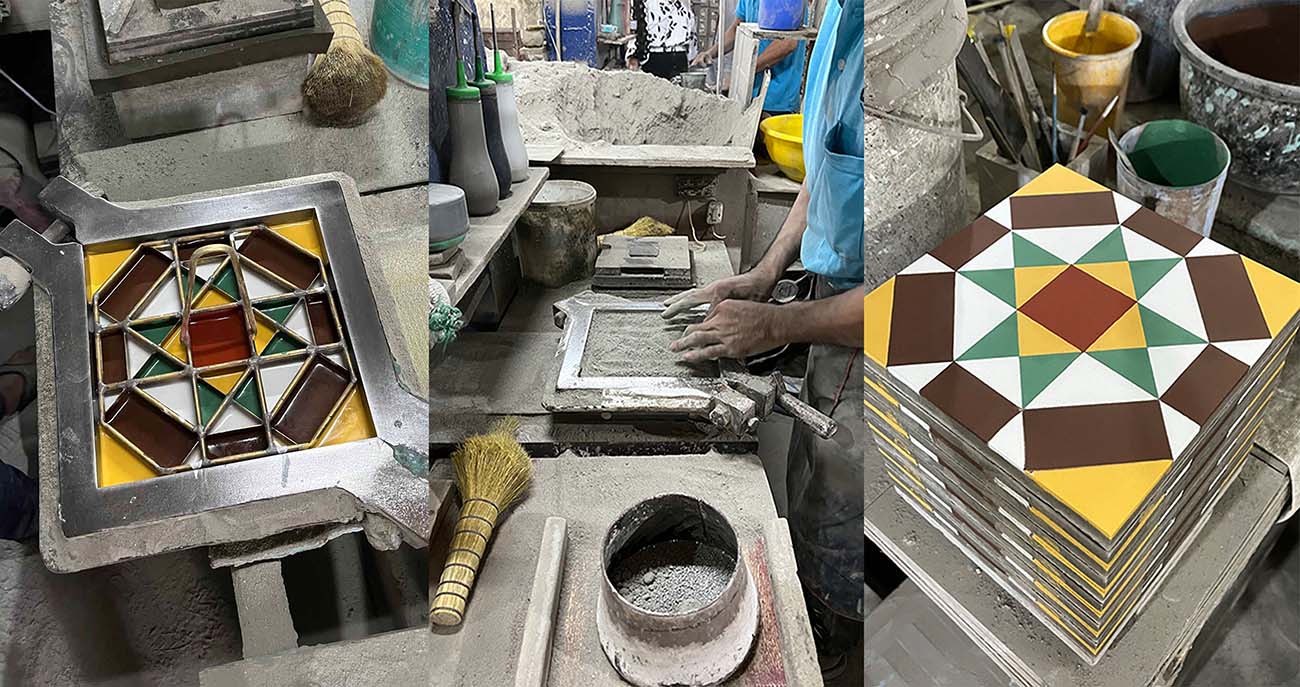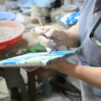
Decorative, durable and very dep – encaustic tiles in Vietnam (part 1)
A quick introduction:
Cement encaustic tiles – a bland, unappealing name but what a gorgeous product. I dare you to swipe through any interior inspired Insta page without tripping over a gloriously tiled splash back or a envy-inducing tiled bathroom. These days, it’s very near impossible not to be bedazzled by a cement tile or three.
But what are these encaustic tiles I speak of? And how are they different from your run-of-the-mill glazed ceramic tiles? It’s all in the materials used and production processes employed. Ceramic tiles are primarily made from a mix of clay, sand and water, although they were originally made back in BC with just clay. The base is fired, then a glaze may (or may not) be added – if decorated, the glaze sits on top of the tile. As a result, modern designs and colours can wear off over time, especially in high volume traffic areas.
Encaustic tiles, on the other hand, consist of two layers – the base, which is a high strength cement, and the decorative top layer, which combines marble powder, white cement and color pigments. The latter is poured into specially made metal molds, keeping the different colours separate in order to create the design. The tile is then hydraulically pressed under high pressure, washed and left to dry and cure, resulting in a beautiful yet durable product.
Due to the manufacturing process employed, the decorative designs of encaustic tiles are embedded into the top layer (around 2.5 to 3 mms) of the tile. The design of a well-made tile does not wear off over time. That is why you can still find encaustic tiles decorating the floors of ancient houses, temples and pagodas, as well as colonial buildings today, not only in Vietnam, but throughout the world. The Central Post Office and the Fine Arts Museum in Ho Chi Minh City, ancient houses and temples in Hoi An, and a crumbling French villa in downtown Hanoi that is home to Loading T Café and Hien Van Ceramics – throughout Vietnam, hand-crafted cement tiles have stood the test of time despite well over a century of use.
A bit of history:
Encaustic tiles were apparently introduced to the Mediterranean by the Persians back during the 7th century. As a decorative flooring feature, cement tiles gradually grew in popularity, not only throughout Europe but in the America’s as well. By the early 1900s, they were being manufactured in southern European countries, including France…
But wait, there’s more! Stay tuned for the next episode of Decorative, durable and very dep, which will be posted next week.
Intermission:
While you are waiting…. are you as enthusiastic about Vietnamese tile gorgeousness as we are? Head over to our online store here for some tile eye candy. Our Sol Anciennes vintage tile-inspired product range might just hit the sweet spot for you.
Information sources:
- Saigoneer: Saigon’s Amazing Concrete Tiles
- Mondoro: The Story of Vietnam’s Encaustic French Tiles
- Viet Tiles: The Basic Differences between Cement Tiles and Ceramic Tiles






